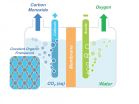(Press-News.org) Washington, DC--For years after it was administered, growth hormone continued to reduce the risk of fractures and helped maintain bone density in postmenopausal women who had osteoporosis, according to a new study published in the Endocrine Society's Journal of Clinical Endocrinology & Metabolism.
Osteoporosis is a progressive condition that causes the bones to become weak and more likely to break. More than 10 million American adults have osteoporosis, and 80 percent of the people being treated for the condition nationwide are women, according to the Society's Endocrine Facts and Figures Report. Women are three times more likely to experience an osteoporosis-related bone fracture in their lifetimes than men.
"Our study is the largest and longest controlled study of growth hormone treatment for osteoporosis in postmenopausal women to date," said one of the study's authors, Emily Krantz, MD, of Södra Älvsborgs Hospital in Borås, Sweden. "Years after treatment stopped, women who were treated with growth hormone still experienced improved bone density and reduced fracture risk."
During an 18-month-long randomized, double-blind trial, 80 postmenopausal women with osteoporosis received daily injections of either placebo, a single unit of growth hormone or a 2.5-unit dose of growth hormone. The women were between the ages of 50 and 70 when they were recruited for the decade-long study.
After 18 months, the women who received the placebo halted the injections. Women who received growth hormone continued to receive injections for another 18 months. The researchers continued to follow up with the women for seven years after the growth hormone treatment was halted to monitor their bone density, fractures and perception of their quality of life.
The researchers compared the participants' bone density and rate of fractures to those of a group of 120 women who did not have osteoporosis. The controls were identified using the city census in Gothenburg, Sweden.
A decade after the study began, the women who received the larger growth hormone dose still had higher bone mineral density levels than the participants who received the lower dose or the placebo. The rate of fractures in the treated women who had osteoporosis declined by 50 percent during the 10-year-long study. More than half of the participants had fractured bones prior to the start of the study. In contrast, the rate of fractures rose four-fold in the control group as some of those women were diagnosed with osteoporosis.
"The findings indicate the beneficial effects of growth hormone remained long after the treatment ceased," Krantz said.
INFORMATION:
Other authors of the study include: Penelope Trimpou and Kerstin Landin-Wilhelmsen of Sahlgrenska University Hospital at the University of Gothenburg in Gothenburg, Sweden.
The study, "Effect of Growth Hormone Treatment on Fractures and Quality of Life in Osteoporosis - A 10-year Follow-up," was published online at http://press.endocrine.org/doi/10.1210/jc.2015-1757, ahead of print.
Founded in 1916, the Endocrine Society is the world's oldest, largest and most active organization devoted to research on hormones and the clinical practice of endocrinology. Today, the Endocrine Society's membership consists of over 18,000 scientists, physicians, educators, nurses and students in 122 countries. Society members represent all basic, applied and clinical interests in endocrinology. The Endocrine Society is based in Washington, DC. To learn more about the Society and the field of endocrinology, visit our site at http://www.endocrine.org. Follow us on Twitter at https://twitter.com/#!/EndoMedia.
NASA's Aqua satellite and NOAA's GOES-West satellite provided temperature and cloud data on newborn Tropical Storm Jimena in the Eastern Pacific Ocean. Data from both satellites show the storm continues to consolidate.
Tropical Depression 13E formed about 865 miles (1,390 km) south-southwest of the southern tip of Baja California, Mexico at 5 p.m. EDT (2100 UTC) on August 26. Six hours later, the depression strengthened into Tropical Storm Jimena at 11 p.m. EDT.
A false-colored infrared image from Aug. 27 at 09:47 UTC (4:57 a.m. EDT) showed high, cold, strong thunderstorms ...
A molecular system that holds great promise for the capture and storage of carbon dioxide has been modified so that it now also holds great promise as a catalyst for converting captured carbon dioxide into valuable chemical products. Researchers with the U.S. Department of Energy (DOE)'s Lawrence Berkeley National Laboratory (Berkeley Lab) have incorporated molecules of carbon dioxide reduction catalysts into the sponge-like crystals of covalent organic frameworks (COFs). This creates a molecular system that not only absorbs carbon dioxide, but also selectively reduces ...
Researchers reporting in the Cell Press journal Current Biology on August 27 have evidence in support of a clearly defined depth limit for deep-sea fishing in Europe. The findings come just as the European Union considers controversial new legislation to manage deep-sea fisheries, including a ban on trawling below 600 meters.
"The most notable thing to consider about our findings is that the trend in catch composition over the depth range of 600 to 800 meters shows that collateral ecological impacts are significantly increasing while the commercial gain per unit effort ...
Isaac Newton was a classic neurotic. He was a brooder and a worrier, prone to dwelling on the scientific problems before him as well as his childhood sins. But Newton also had creative breakthroughs--thoughts on physics so profound that they are still part of a standard science education.
In a Trends in Cognitive Sciences Opinion paper published August 27, psychologists present a new theory for why neurotic unhappiness and creativity go hand-in-hand. The authors argue that the part of the brain responsible for self-generated thought is highly active in neuroticism, which ...
Researchers at the Virginia Bioinformatics Institute at Virginia Tech have uncovered key cellular functions that help regulate inflammation -- a discovery that could have important implications for the treatment of allergies, heart disease, and certain forms of cancer.
The discovery, to be published in the Oct. 6 issue of the journal Structure, explains how two particular proteins, Tollip and Tom1, work together to contribute to the turnover of cell-surface receptor proteins that trigger inflammation.
"The inflammatory response can be a double-edged sword," said Daniel ...
Mobility between different physical environments in the cell nucleus regulates the daily oscillations in the activity of genes that are controlled by the internal biological clock, according to a study that is published in the journal Molecular Cell. Eventually, these findings may lead to novel therapeutic strategies for the treatment of diseases linked with disrupted circadian rhythm.
So called clock-controlled - or circadian - genes are part of the internal biological clock, allowing humans and other light-sensitive organisms to adjust their daily activity to the cycle ...
Cold Spring Harbor, NY - When a large combat unit, widely dispersed in dense jungle, goes to battle, no single soldier knows precisely how his actions are affecting the unit's success or failure. But in modern armies, every soldier is connected via an audio link that can instantly receive broadcasts - reporting both positive and negative surprises - based on new intelligence. The real-time broadcasts enable dispersed troops to learn from these reports and can be critical since no solider has an overview of the entire unit's situation.
Similarly, as neuroscientists at Cold ...
LA JOLLA--Every organism--from a seedling to a president--must protect its DNA at all costs, but precisely how a cell distinguishes between damage to its own DNA and the foreign DNA of an invading virus has remained a mystery.
Now, scientists at the Salk Institute have discovered critical details of how a cell's response system tells the difference between these two perpetual threats. The discovery could help in the development of new cancer-selective viral therapies and may help explain why aging and certain diseases seem to open the door to viral infections.
"Our ...
Working with human cancer cell lines and mice, researchers at the Johns Hopkins Kimmel Cancer Center and elsewhere have found a way to trigger a type of immune system "virus alert" that may one day boost cancer patients' response to immunotherapy drugs. An increasingly promising focus of cancer research, the drugs are designed to disarm cancer cells' ability to avoid detection and destruction by the immune system.
In a report on the work published in the Aug. 27 issue of Cell, the Johns Hopkins-led research team says it has found a core group of genes related to both ...
Understanding exactly what is taking place inside a single cell is no easy task. For DNA, amplification techniques are available to make the task possible, but for other substances such as proteins and small molecules, scientists generally have to rely on statistics generated from many different cells measured together. Unfortunately, this means they cannot look at what is happening in each individual cell.
Now, thanks to seven years of work done at the RIKEN Quantitative Biology Center and Hiroshima University, scientists can take a peek into a single plant cell and--within ...






